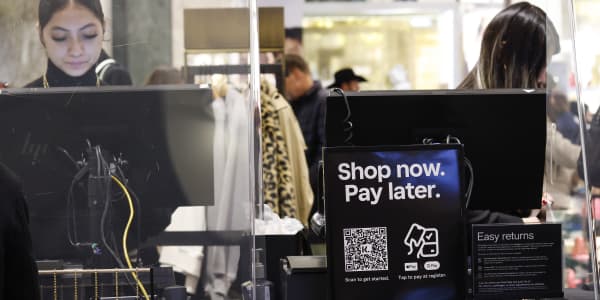Big-screen televisions and the latest smartphones will once again top holiday wish lists, but more and more, new high-tech gadgets are making the cut as well.
Technology is traditionally the hottest gift category during the holiday season, and 2016 may set new record highs. The Consumer Technology Association predicts spending on tech in November and December will increase 3.1 percent over last year, coming in at $36.05 billion.
"The 2016 holiday season looks to be the biggest on record for the tech sector, thanks to fresh and innovative products on the market such as wearable tech, VR headsets, drones and digital assistant devices," said Shawn DuBravac, chief economist at the CTA. "Our research also finds that most Americans are now using tech devices to help them research and buy tech gifts, a key driver of tech spending this holiday."
While big ticket items like TVs might be what everyone's hoping to find under the tree, those sorts of gifts are less common — despite the innumerable Black Friday and doorbuster specials. Instead, headphones are expected to make up 40 percent of all tech gifts, as wireless audio devices gain traction. (UNU.ai, an artificial swarm intelligence technology created by Unanimous A.I., predicts Sennheiser's RS 175 Wireless headphones will be the season's best-seller.)
Virtual reality headsets are expected to be a prime talking point as well, but despite all the hype and media attention, they're still going to be something of a drop in the ocean saleswise. The CTA predicts 700,000 units will be sold during the holidays.
While the group doesn't break that number out by brand, many analysts predict Sony's PlayStation VR will be the biggest seller, given the large number of PlayStation 4 units already in people's homes and its extensive software catalog.
The biggest factor, though, may be price. A PlayStation VR headset starts at $400 — versus $600 for an Oculus Rift and $800 for an HTC Vive. Virtual reality is certainly cool this year, but for most shoppers, it's still not at a palatable price point.
The average consumer, said P.J. McNealy of Digital World Research, "remains price sensitive and will look for discounts and bundles, but the bottom line is a high-end PC-based tethered VR experience is not on the 2016 holiday shopping list."
Other emerging tech categories that are expected to be big this year include wearables, smart home devices and connected toys. And the popularity of drones shows no signs of slowing down, with CTA estimating sales will more than double from last year.
One tech item that doesn't seem to be on any holiday lists? Hoverboards. The hottest gift (in many cases, literally so) of last year has fallen out of favor after multiple post-holiday horror stories of the toys catching fire and damaging homes.
Among smartphones, another item that's traditionally a big seller at this time of year, Apple sits in an enviable position. While the reception to the iPhone 7 and 7 Plus wasn't as overwhelming as it has been for previous releases, Samsung's recall of the Galaxy Note 7 could make consumers wary. That lack of a high-end Samsung product could spur more people to iPhone (which may offset the lack of a new flagship iPad this year) or could be a boost for other Android carriers.
One of the other tech gifts topping wish lists this year is video game consoles. To meet that demand, both Microsoft and Sony have introduced updated versions of the Xbox One and PlayStation 4, respectively, to spur demand.
And since the software lineup for the third and fourth quarter of 2016 is rather sparse compared with last year (and what's to come in 2017), expect to see several different bundles pairing the systems with popular games and likely a number of notable retail discounts on the new systems as the industry tries to lure people who still play primarily on their Xbox 360 or PlayStation 3.
"Historically, this is about the time more casual or new buyers enter the market or upgrade their systems," said John Taylor of Arcadia Investment in a note.



